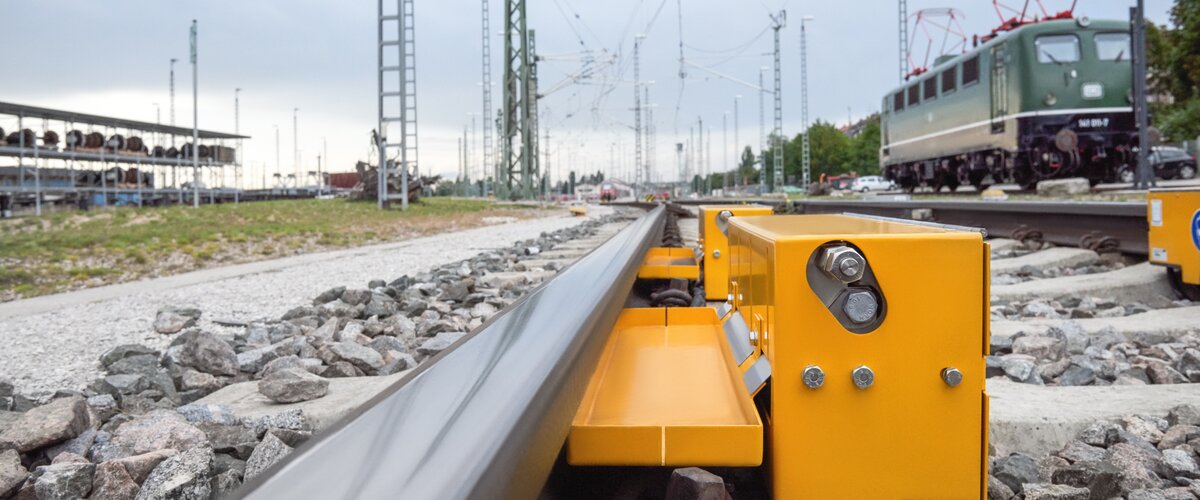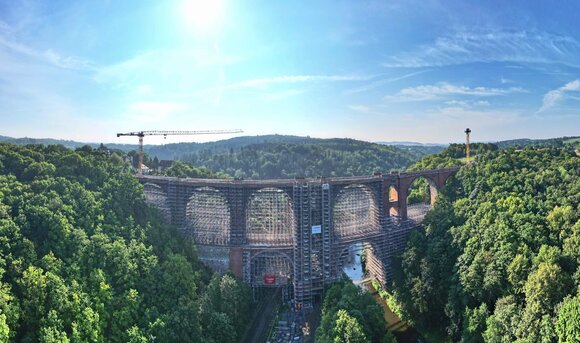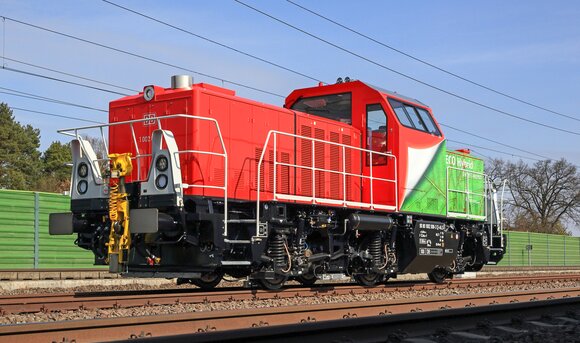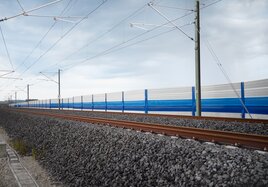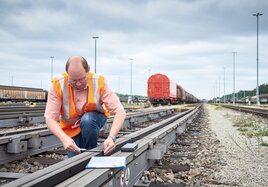Conventional noise barriers are not always suited to use in the city. There’s not even always enough space to build them next to the rail tracks. We are therefore testing a range of innovative measures to ensure that we are able to offer really suitable solutions at all times.
Innovative technology for more noise reduction
We have successfully tested noise shields known as rail web dampers and are using them at suitable locations in our rail network. The various systems are mounted directly on both sides of the rails at short intervals. They consist of steel components that encase damping material. This mass-spring system absorbs the vibrations made on the rails when a train passes over them and reduces noise by up to three decibels.
We want to get our bridges to stop humming. For this purpose, we have put together a guide to innovative technologies. We have listed everything from elastic sub-ballast mats and padded ties to bridge dampers and damping foils in this versatile catalog of measures. It is intended to provide guidance to planning offices seeking to identify and implement the right noise reduction measures. We can then consider noise reduction from the very beginning, when renovating old bridges, for instance.
And when we’re not allowed to build too high, we install low-height noise barriers close to tracks that can still reduce noise by three to five decibels.
To protect residents living along our routes from rail noise, we have lubrication devices installed that lubricate the rails automatically when our trains squeal on curves.
Modern noise reduction on tunnels
We also pay attention to noise reduction in tunnel construction. When a train travels through a tunnel at high speed, it pushes forward air masses that build up and can result in an audible bang when the train exits the tunnel. This effect occurs particularly when a train passes at high speed through a tunnel with a small cross-section. We equip such tunnels, which can accommodate trains at 300 km/h, with hood structures at the entrance portals to reduce the sonic boom. These redirect the pressure waves upward through vents, allowing them to swirl and spread without a bang.
We are taking advantage of numerous possibilities to do something about noise. In this way, we can protect residents along our routes from rail noise.
